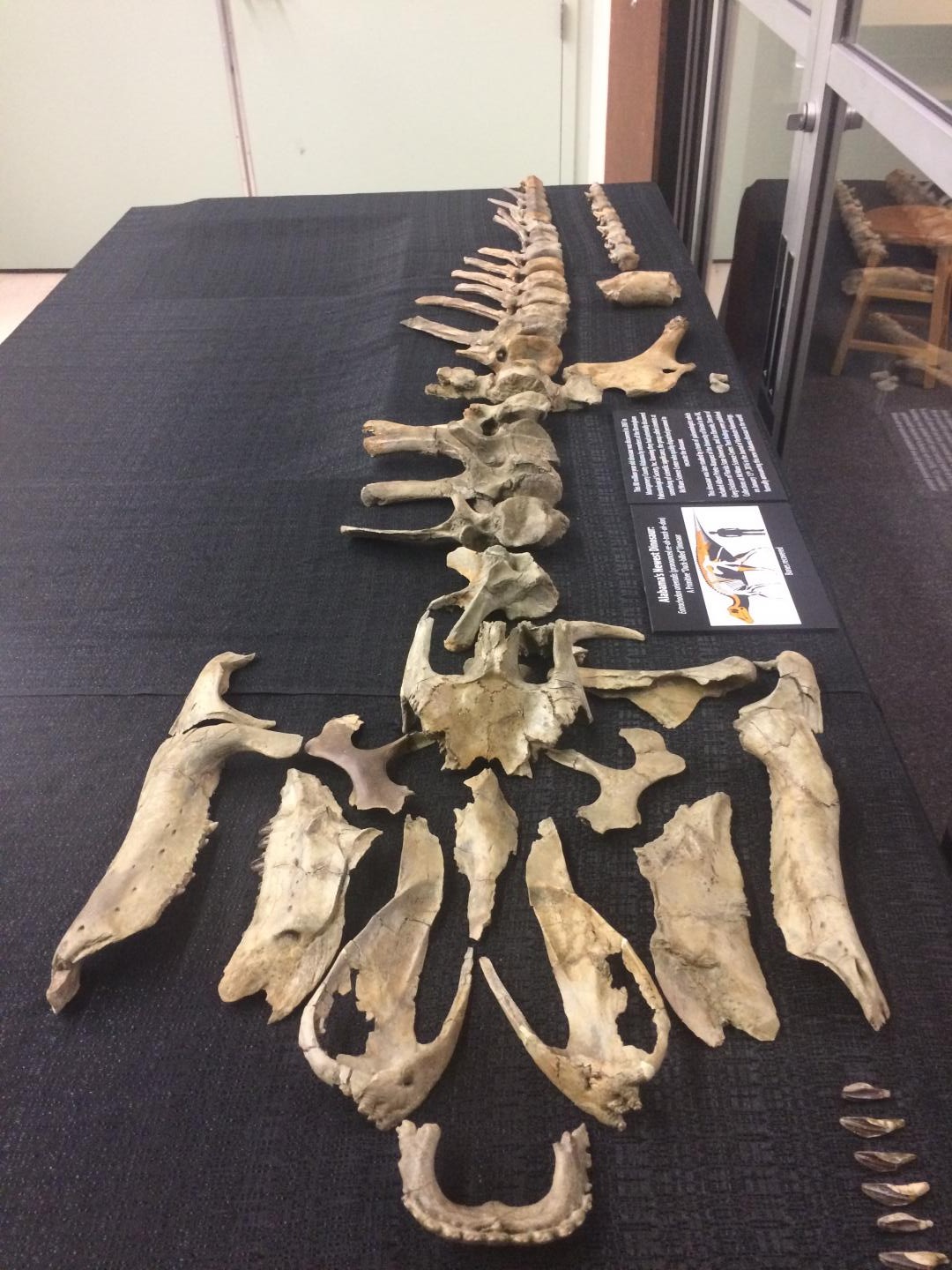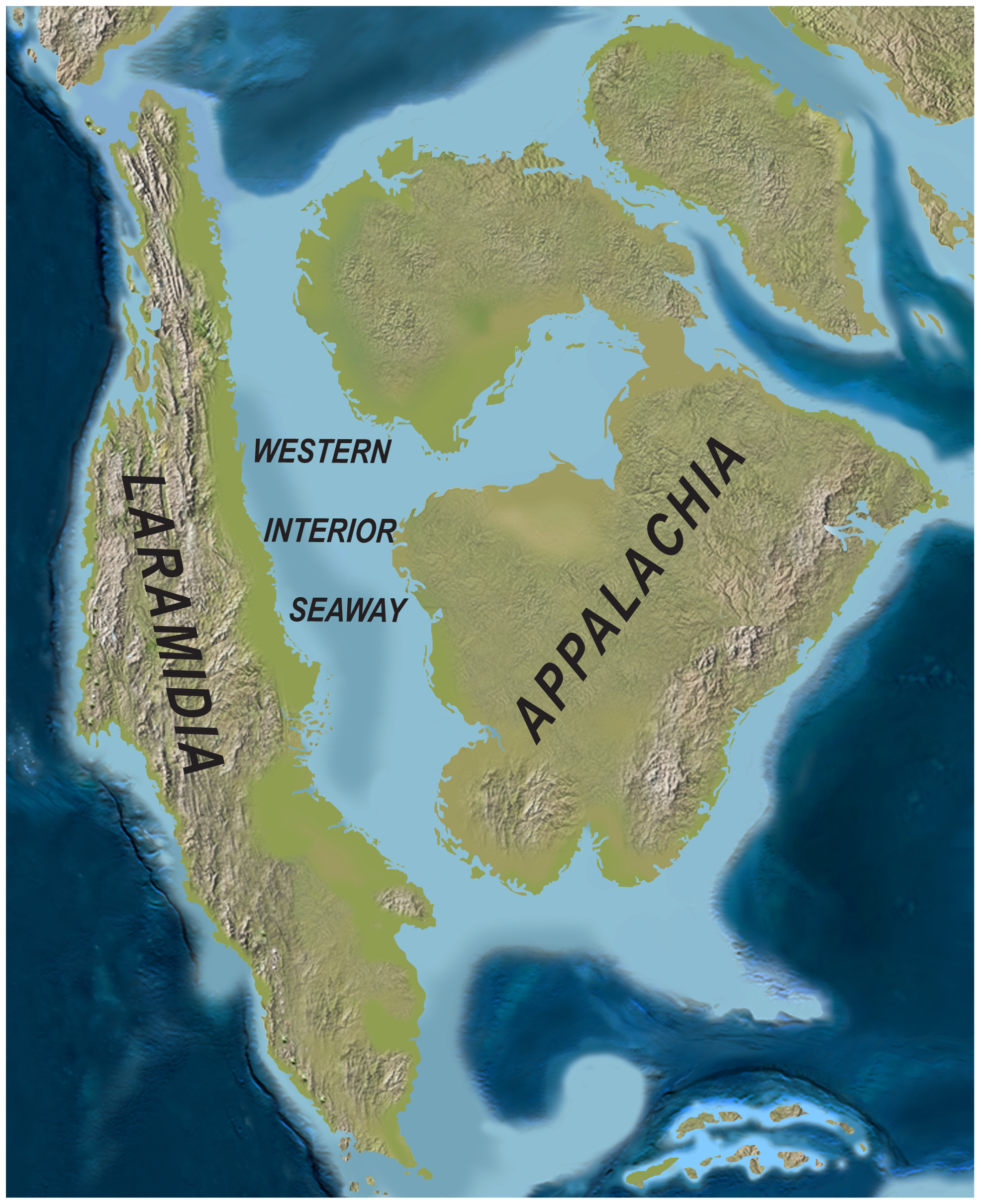
Amateur fossil hunters exploring along a creek in Alabama stumbled across what Prof. Gregory Erickson of Florida State University describes as:
… a landmark animal in terms of understanding dinosaur paleontology.
They had discovered the most complete primitive duck-billed dinosaur fossil ever found in eastern North America. This rare discovery is made even more remarkable by its preserved skull.
This new dinosaur species – which lived 83 million years ago – is casting fresh insights into the early evolution of duck-billed dinosaurs, including evidence that they first emerged in current-day eastern North America. Details about the dinosaur, named Eotrachodon orientalis, meaning dawn rough tooth from the east, was published in the January, 2016, issue of the Journal of Vertebrate Paleontology.
Duck-billed dinosaurs, also known as Hadrosaurids, grazed on a wide variety of plants. They lived during the late Cretaceous Period, 85 to 66 million years ago and were widely distributed across the globe, with fossils found in present-day North America, China, and Europe.

About 85 million years ago, eastern and western North America were divided by a sea that stretched from the Arctic to the Gulf of Mexico. Eastern North America was a large island known as Appalachia. There, the first duck-billed dinosaurs evolved in isolation, barred from other continents by vast stretches of water.
Jun Ebersole, director of collections at McWane Science Center, Alabama, said in a statement:
For roughly 100 million years, the dinosaurs were not able to cross this barrier. The discovery of Eotrachodon suggests that duck-billed dinosaurs originated in Appalachia and dispersed to other parts of the world at some point after the seaway lowered, opening a land corridor to western North America.
Added Gregory Ericsson:
They just needed to get off the island. From there, they became the cows of the Cretaceous.

Dinosaur fossils are very rare in the southern U.S., and finding one with a skull was an astounding discovery. Realizing the scientific significance of their find, the fossil hunters who had come upon the dinosaur remains, members of the Birmingham Paleontological Society, contacted staff at the McWane Science Center in Birmingham. Experts from the center carefully extracted the fossil and transported it to their facility for cleaning.
A complete skull, a partial hip bone, some limb bone and dozens of backbone were recovered, making it one of the most complete known dinosaur skeletons in eastern North America.
Like many other dinosaurs, this early duck-billed dinosaur is thought to have had scaly skin. It was built to walk on its hind legs, but may have bent down on four legs to graze on plants. Its teeth were adapted for grinding up vegetation, not unlike cows and horses, which allowed the dinosaur to feed on a diversity of plants.
Erickson analyzed some of the bone and teeth at his lab at Florida State University. He did not see any growth lines in the bone, making it impossible to age the dinosaur. But the bone contained many channels that once held blood vessels, indicating that the dinosaur had been growing rapidly, perhaps emerging into adulthood at the time of its death. It would have had more growing to do, and could have reached 20 to 30 feet in length, a typical size for adult duck-billed dinosaurs.
In the video below, Prof. Erickson discusses Eotrachodon orientalis.
Eotrachodon orientalis had a large crest on its nose and interesting skull indentations. These features alerted the paleontologists that they were dealing with an unusual duck-billed dinosaur.
Albert Prieto-Marquez, at the University of Bristol in the UK, is the lead author of the paper about this discovery. He told EarthSky there were two major groups of hadrosaurids (duck-billed dinosaurs). Saurolophines had crests made of solid bone (for most species) or lacked crests. The other group, Lambeosaurines, had hollow skull crests or tubes. Eotrachodon orientalis was a Saurolophine.
He explained:
Hadrosaurids are characterized by extremely enlarged nasal passages bearing a number of unique structures. In [Saurolophines], being either crestless or sporting a variety of solid skull crests, the bones forming the upper portion of the snout contained a number of excavated areas and ridges. So far, we did not know much about the early evolution of such circumnarial structures [bone surrounding the snout]. Eotrachodon is an important taxon because it shows an early stage in the evolution of that circumnarial structure, and also for being the most complete hadrosaurid known from the eastern half of North America, notably the only member of the group for which the skull is known. [Preserved skulls from other dinosaur species have been found in eastern North America but they were not Hadrosaurids.]

Bottom line: A rare discovery of the most complete known duck-billed dinosaur has given paleontologists a new understanding of Hadrosaurid evolution. The 83-million-year old dinosaur was a new species. It’s been given the name Eotrachodon orientalis. A study about this new primitive duck-billed dinosaur was published in the January, 2016, issue of Journal of Vertebrate Paleontology.











